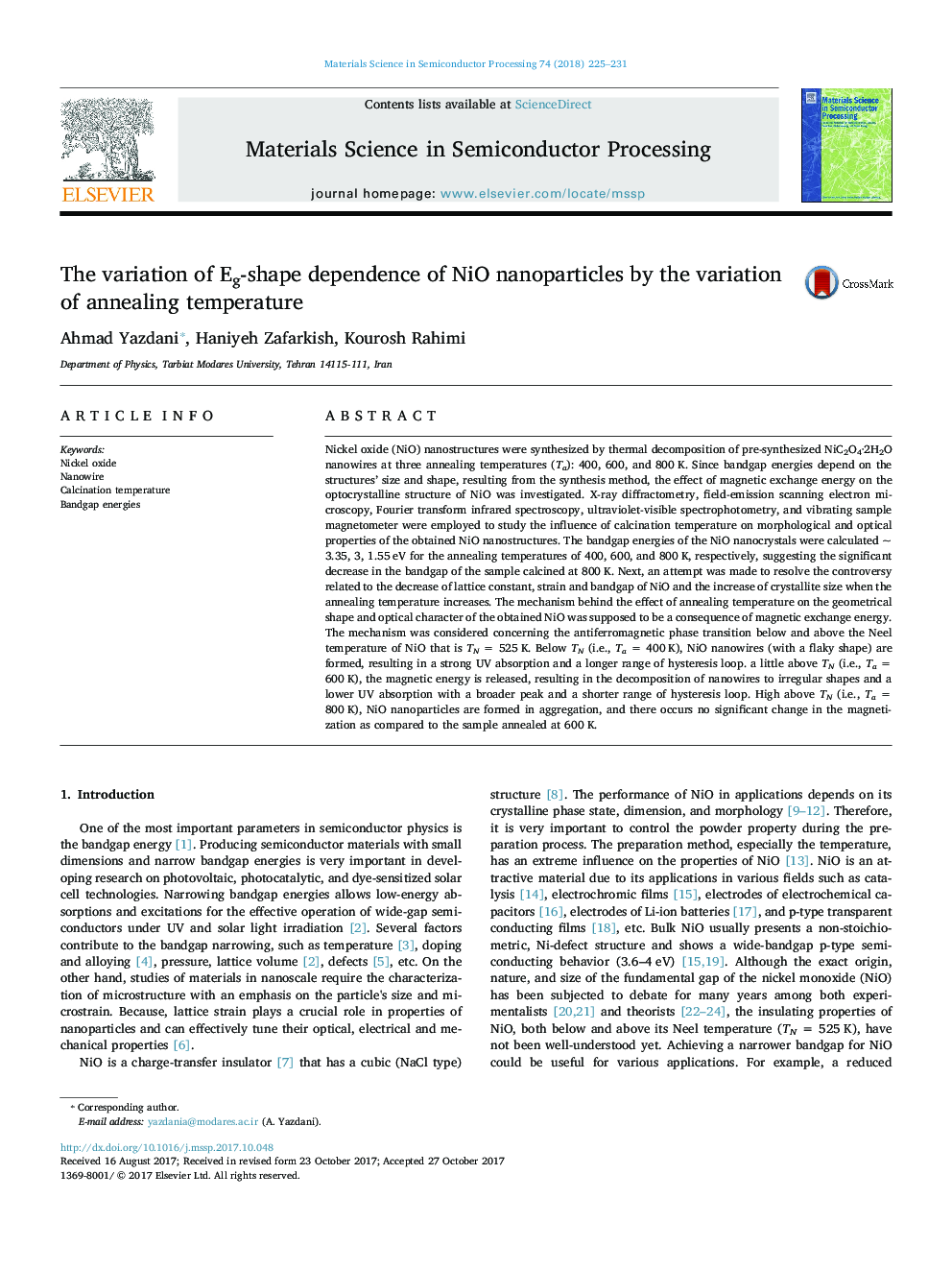| کد مقاله | کد نشریه | سال انتشار | مقاله انگلیسی | نسخه تمام متن |
|---|---|---|---|---|
| 7118217 | 1461373 | 2018 | 7 صفحه PDF | دانلود رایگان |
عنوان انگلیسی مقاله ISI
The variation of Eg-shape dependence of NiO nanoparticles by the variation of annealing temperature
دانلود مقاله + سفارش ترجمه
دانلود مقاله ISI انگلیسی
رایگان برای ایرانیان
موضوعات مرتبط
مهندسی و علوم پایه
سایر رشته های مهندسی
مهندسی برق و الکترونیک
پیش نمایش صفحه اول مقاله

چکیده انگلیسی
Nickel oxide (NiO) nanostructures were synthesized by thermal decomposition of pre-synthesized NiC2O4·2H2O nanowires at three annealing temperatures (Ta): 400, 600, and 800 K. Since bandgap energies depend on the structures' size and shape, resulting from the synthesis method, the effect of magnetic exchange energy on the optocrystalline structure of NiO was investigated. X-ray diffractometry, field-emission scanning electron microscopy, Fourier transform infrared spectroscopy, ultraviolet-visible spectrophotometry, and vibrating sample magnetometer were employed to study the influence of calcination temperature on morphological and optical properties of the obtained NiO nanostructures. The bandgap energies of the NiO nanocrystals were calculated ~ 3.35, 3, 1.55 eV for the annealing temperatures of 400, 600, and 800 K, respectively, suggesting the significant decrease in the bandgap of the sample calcined at 800 K. Next, an attempt was made to resolve the controversy related to the decrease of lattice constant, strain and bandgap of NiO and the increase of crystallite size when the annealing temperature increases. The mechanism behind the effect of annealing temperature on the geometrical shape and optical character of the obtained NiO was supposed to be a consequence of magnetic exchange energy. The mechanism was considered concerning the antiferromagnetic phase transition below and above the Neel temperature of NiO that is TN = 525 K. Below TN (i.e., Ta = 400 K), NiO nanowires (with a flaky shape) are formed, resulting in a strong UV absorption and a longer range of hysteresis loop. a little above TN (i.e., Ta = 600 K), the magnetic energy is released, resulting in the decomposition of nanowires to irregular shapes and a lower UV absorption with a broader peak and a shorter range of hysteresis loop. High above TN (i.e., Ta = 800 K), NiO nanoparticles are formed in aggregation, and there occurs no significant change in the magnetization as compared to the sample annealed at 600 K.
ناشر
Database: Elsevier - ScienceDirect (ساینس دایرکت)
Journal: Materials Science in Semiconductor Processing - Volume 74, February 2018, Pages 225-231
Journal: Materials Science in Semiconductor Processing - Volume 74, February 2018, Pages 225-231
نویسندگان
Ahmad Yazdani, Haniyeh Zafarkish, Kourosh Rahimi,